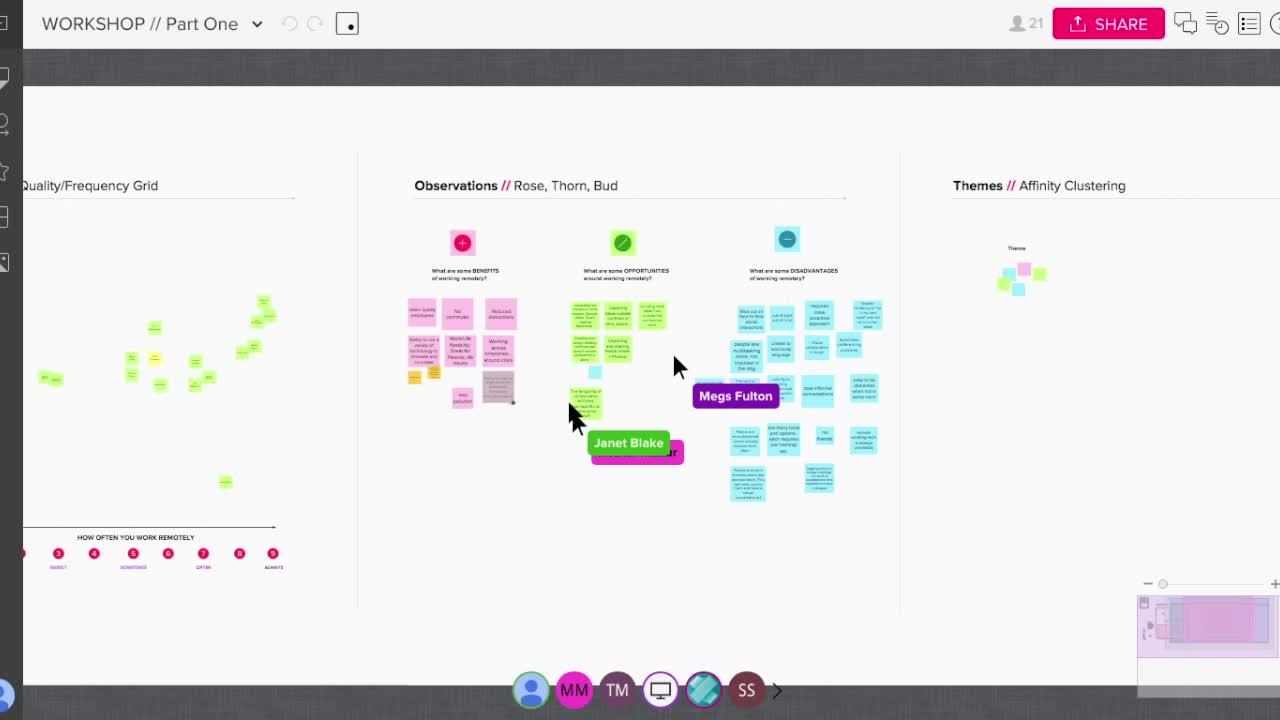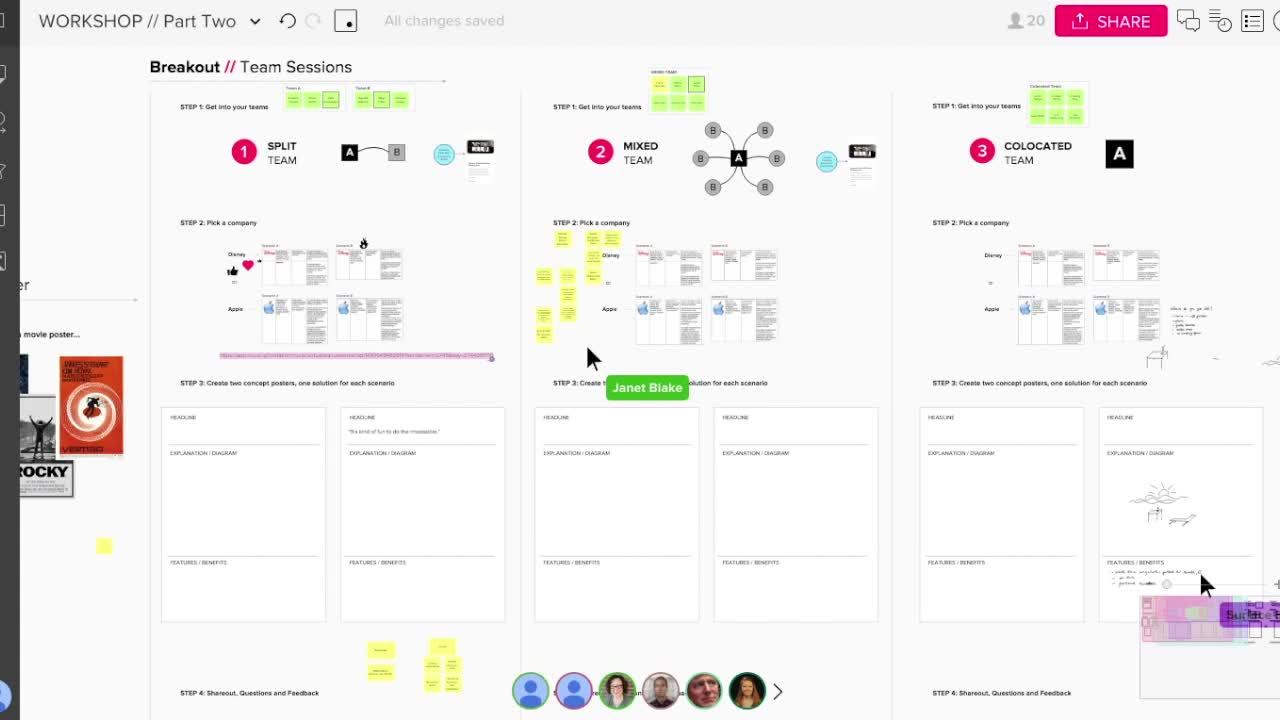Related case studies
Start collaborating with Mural today
Sign up free

How do you create innovative environments when you rely on geographically distributed talent? At Mural, we developed an interactive, three-hour workshop that would meet designers on their journeys toward more effective design collaboration.
To get attendees comfortable with the tools, we prepared an introduction exercise in advance (pre-work is a best practice) that would encourage them to share their names, the amount of remote work they did and their level of satisfaction with the quality of their remote work.
Then we brought it to life by inviting participants to record their observations in a mural using a method called “Rose, Thorn, Bud,” which we then used to create an affinity map of the participants’ pain points and moments of delight.

For the main activity, we divided participants among one of three common team configurations - split, mixed and co-located teams - to simulate real-life circumstances and uncover strategies for improving remote collaboration.
Each team had to complete two Concept Posters, which combine two design thinking methods into one activity (Concept Poster and Alternative Worlds), that would offer creative solutions to mock collaboration challenges faced by design-led companies.

SPLIT TEAM
The split team, which occurs when two or more co-located teams collaborate, is common in companies that have established locations in multiple cities. To simulate this, we divided one team into two conference rooms, where they’d be isolated except for a Zoom connection, to work together on the same challenge.
MIXED TEAM
The mixed team, which we’ve found to be the most common remote work configuration, is made up of one central, co-located team that collaborates with one or more remote members. We established this scenario by giving one group co-located team members an open workspace and the tools, namely Zoom and Mural, to connect with one remote attendee.
CO-LOCATED TEAM
The co-located team, characterized by having all team members in the same physical location, has historically been the most common type of workplace configuration. In this case, we put the balance of the participants into one, large space where they could use an 84” Surface HUB, their own devices and paper supplies.
In the end we reunited to let everyone pitch their creative solutions, maintaining the spirit of digital collaboration by launching a Mural-based voting session. Ultimately, the workshop furthered the notion that effective remote collaboration requires the right set of tools.

Using this approach, participants are expected to ideate solutions for improving virtual and remote design experiences through:
Over 95% of the Fortune 100 use Mural to get things done.
No credit card required





